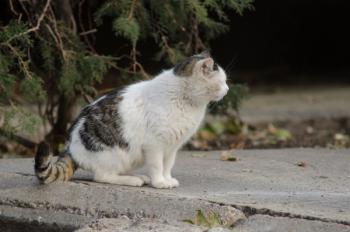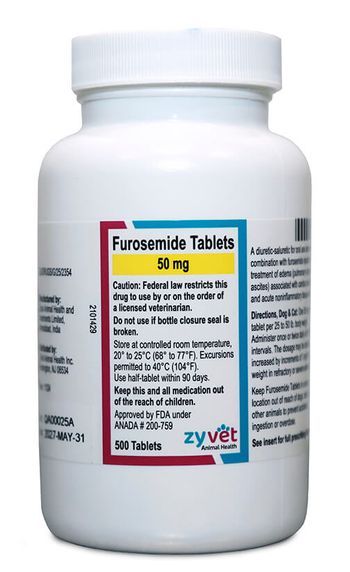
Optimizing feline housing in shelters (Proceedings)
It is only relatively recently that shelters actually house cats. Most older shelters were designed to house only dogs as this was the legal mandate of animal control.
It is only relatively recently that shelters actually house cats. Most older shelters were designed to house only dogs as this was the legal mandate of animal control. For some reason we have collectively come to believe that placing cats into small metal cages for weeks, months even years on end is humane and acceptable shelter practice. This may be partly due to cats' behavior that tend to be quiet and "uncomplaining" and partly due to the sheer number of them. In addition, simple habit and a "that's how everyone houses cats" mentality are also at work. It is time to start thinking out-of-the-box and to reconsider how we house cats in shelters. Doing so will not only increase their welfare but will also significantly reduce the ubiquitous diseases that plague our feline friends.
Most shelters will not be able to finance new buildings or renovate their existing ones. However, if that is an option then the time to focus on cat housing is earlier rather than later. It is important to carefully articulate the goals for the project early in the process of building a new or expanded facility. Consideration should be given to both current and future trends. A good question to ask regarding cat is how will the new housing improve their welfare? Will a huge, impressive lobby have more benefit than high quality cat housing? Many times it is not. Sometimes shelters are built or expanded with the idea that simply expanding the space and making the environment more appealing on the surface (i.e. to humans) will lead to great gains in saving lives. However, more space alone will not necessarily increase adoptions or reduce euthanasia - if quality and efficiency of the space is not improved, the results of even an enormous investment in facility expansion may be disappointing.
Concepts to keep in mind when renovating cat housing
A - Minimize disease transmission
The majority of feline diseases in animal shelters are spread by fomites, environmental contamination, and direct animal contact. A fomite is any object that may become contaminated with disease-causing microorganisms and thus serve to transmit disease. Fomites include dishes, bedding, leashes, and, most importantly, the hands and clothing of animal care staff. Contamination of animal care staff occurs most readily when animals are handled for cleaning. It is a common misconception that the majority of diseases in a shelter setting are airborne. This is generally not true, especially in cats. Studies have shown that aerosol transmission plays little role in the contagiousness of upper respiratory infections in cats. Healthy cats housed in the same air space as sick cats remained healthy, as long as fomite transmission from the sick to healthy cats was prevented. Fomite transmission was prevented primarily by assigning different caretakers for the sick and healthy cats. Coughing or sneezing cats are unable to generate aerosols that will spread any further than 4-5 feet.
• Recommendation number one for new cat housing:
• Build or design double sided cages/runs. This system is not for dogs only. It also allows cats to be gently moved to one side while the other is being cleaned minimizing fomite transmission and stress.
o "Old" small cages can be expanded with some ingenuity. Side-by-side cages can be made into double sided ones by cutting holes into sides or floors/tops.
o If double sided cages are not possible then at least give each cat a hiding box. This will allow the cat to hide and stay within the cage while it is being "spot cleaned" :
• Recommendation number two for new cat housing:
• Ensure that there is sufficient space to segregate the following sub-populations:
o Sick cats by disease (e.g. respiratory disease, diarrhea, ringworm)
o Cats recovering or recovered from illness
o Kittens (under 5 months of age)
B - Housing that supports cats' resistance to disease
Access to outdoor air and sunshine is recommended for both dogs and cats, especially in mild climates. While this type of housing is fairly commonly seen for dogs it is rarely considered for cats in this country. It makes intuitive sense that offering indoor/outdoor cages for cats would help to alleviate stress, boredom and disease transmission. In fact, most shelters in the UK house cats in precisely such types of runs and they experience much less URI than shelters in the US.
• Recommendation number three for new cat housing:
• Design indoor/outdoor cages for cats. There are many options available - for some suggestions see:
C - Housing that minimizes stress and maximizes welfare
The link between stress and disease is well documented. Stress in shelter housing is often a particularly severe problem for cats. Partly is because stress is more difficult to recognize and identify in cats than in dogs. Signs of stress in cats are more subtle (decreased activities such as eating and grooming, feigned sleep, hiding). There are many arguments against humane housing for cats. High quality housing that reduces stress and improves comfort may cost more and will likely take up more space, meaning fewer units can be built in the same area. However, if the housing keeps animals healthier, encourages friendly behavior, and looks appealing to adopters, animals will likely get adopted more rapidly resulting in more lives being saved even though the shelter is housing fewer cats at one time. The same number of animals can be housed in half the kennels if they move through the shelter twice as fast. Thus, it is likely that fewer units of better housing can actually lead to more adoptions as well as better welfare. This is true even when the housing in question is not viewable by the public e.g. stray hold. Keeping a cat comfortable, clean and free of stress during this time, can avert illness and alleviate fearful behavior that could otherwise greatly prolong the animal's time in the shelter. On a purely financial note: days spent in shelter = money!
It is also necessary to consider the length of stay in determining appropriate housing. What may be acceptable for short-term housing of cats (a few days or weeks) may not be adequate for long-term housing (months). However, even what is routinely considered appropriate for short shelter stays is often inadequate. Welfare of cats in shelters is far too commonly compromised by housing them in unacceptably small barren cages for too long. Shelters should be role models for animal care for the community. We wouldn't adopt cats to people if they told us they were going to keep the cat in a three foot cube!
Humane, low-stress housing is equally important, if not even more important, for new intake and isolation areas than it is for adoption areas. There is often a tendency for adoption area housing to be larger, lighter, more enriched, and less crowded than housing in holding and isolation areas. Newly admitted cats that have not adjusted to the shelter environment, and which were just recently vaccinated, have the highest stress levels and may be at the highest risk of disease. Animals that are already sick also need optimal housing to promote recovery.
• Recommendation number four for new cat housing:
• Provide the best possible housing for cats in intake and isolation wards not just adoptions.
D - Size does matter
It is extremely common for cats in shelters to be provided with far too little space. The cages assigned to cats are typically only a fraction of the space afforded to dogs. Studies have shown that a space allowance of at least 1m2 (10.8ft2) floor area per cage for singly housed cats is required in order to prevent excessive stress levels. This is much larger than the typical 3 × 3 × 2 ft cage. For co-housed cats, an additional 0.75m2 per additional cat has been suggested by experts. Cages in which cats are unable to stretch their full body length are acceptable only for very short-term housing (maximum 24 hours). Cages for housing cats longer than 24 hours must be large enough to allow separation of at least several feet between feeding, and resting, and elimination areas; a litterbox large enough to accommodate a cat; and sufficient floor space for locomotion and play.
• Recommendation number five for new cat housing:
• Allow for a minimum of 1m2 (10.8ft2) of cage floor space for each cat. This can be easily achieved by using the larger "double" Shoreline® cage or multilevel condos. These cages will then allow for a hiding box and plenty of separation of sleeping, eating and elimination space. Shelters that have an excess of dog runs can easily convert these areas to "cat run" wards.
Summary
These are only some of the basic recommendations for humane cat housing in shelters. Many shelters are currently fund raising for capitol improvements – that is the time to brain-storm on how to increase the care given to cats. Although it is initially counter-intuitive, having fewer larger double-sided cages in all areas of a shelter will very likely increase adoption and number of lives saved. Imagine having shelter feline URI as the exception rather than the rule; providing good housing and managing the population to avoid crowding will bring that dream to reality.
References
Key D. Cattery Design: The Essential Guide to Creating your perfect Cattery. First ed. Oxfordshire, United Kingdom: Davis Key, 2006. Available online at
Carlstead K, Brown JL, Strawn W. Behavioral and physiological correlates of stress in laboratory cats. Applied Animal Behaviour Science 1993;38:143-158.
Gourkow N, Fraser D. The effect of housing and handling practices on the welfare, behaviour and selection of domestic cats (Felis sylvestris catus) by adopters in an animal shelter. Animal Welfare 2006;15:371-377.
Rochlitz I. Housing and Welfare In: Rochlitz I, ed. The Welfare of Cats. Dordrecht: Springer, 2005;177-203.
Turner DC. Effects of density and cage size on stress in domestic cats (Felis Silvestris Catus) housed in animal shelters and boarding catteries. Animal Welfare 1999;8:259-267.
Newsletter
From exam room tips to practice management insights, get trusted veterinary news delivered straight to your inbox—subscribe to dvm360.






